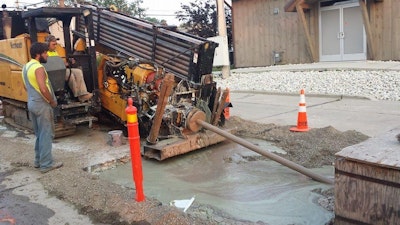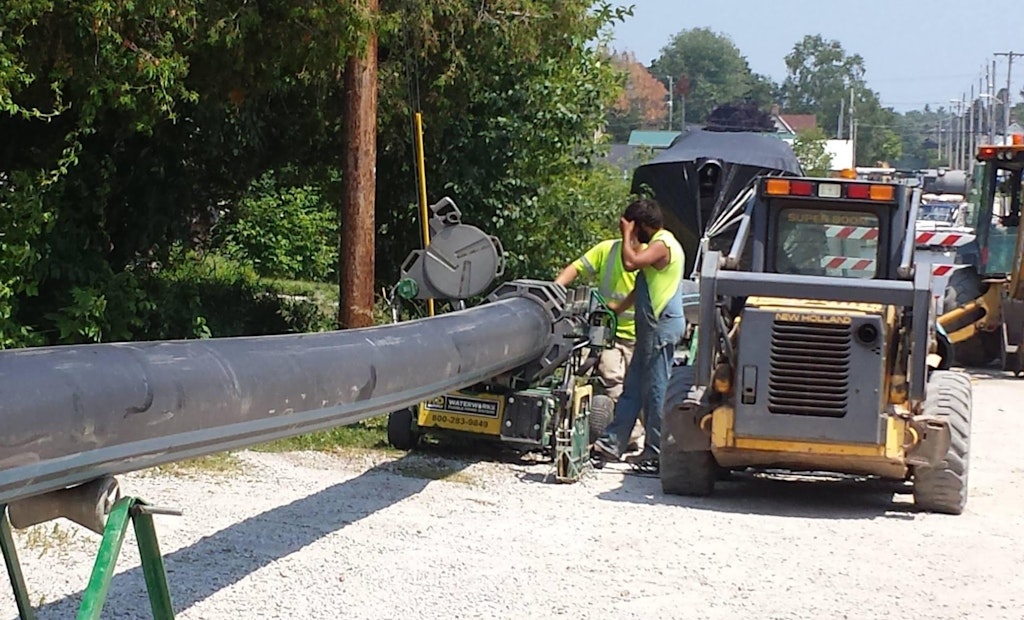Interested in Infrastructure?
Get Infrastructure articles, news and videos right in your inbox! Sign up now.
Infrastructure + Get AlertsWisconsin has requested a federal disaster declaration to help local governments cover the cost of repairing broken water mains, frozen water towers and other damage caused by an extended streak of record cold weather this past winter. Although communities across the state reported unexpected expenses, eight counties with $11.3 million in damages were selected for the initial request. If approved, others could be added following additional documentation; 69 of the state’s 72 counties reported damages totaling $25 million in initial reports.
In a letter to President Barack Obama requesting funds from the Federal Emergency Management Agency, Wisconsin Governor Scott Walker explained that a wet fall that saturated the soil was followed by one of the coldest winters in history.
 “The last time it was this cold across southern Wisconsin was in the mid- to late-1970s, and for northern Wisconsin, the late 1890s,” he wrote, noting the extreme cold began in late November and lasted through April. “The prolonged cold led to the exceptional frost depths underneath area roads.”
“The last time it was this cold across southern Wisconsin was in the mid- to late-1970s, and for northern Wisconsin, the late 1890s,” he wrote, noting the extreme cold began in late November and lasted through April. “The prolonged cold led to the exceptional frost depths underneath area roads.”
Deep frost lines mean deep damage
Southern Wisconsin, where frost lines are typically 36 inches deep, recorded frost ranging from 50 to 65 inches deep. In the north, the frost line is usually around 60 inches, but averaged around 78 inches. Clark County, in central Wisconsin, reported the deepest frost line at 108 inches. In the southeast, Milwaukee County had frost to 90 inches. Other reported frost depths include:
- Kenosha County – 60 inches
- Winnebago County – 66 inches
- Wood County – 72 inches
- Fond du Lac County – 72 inches
- Chippewa County – 96 inches
A total of 337 local governments reported damage during an initial request from the state as it began exploring federal aid. One of those was the City of Two Rivers where City Manager Greg Buckley reported $576,000 in extra expenses. In the first quarter of 2014, the city of 12,000 spent $177,000 repairing water mains and service laterals compared to a normal expenditure of about $22,000 during that time period. City staff thawed out 174 residential and commercial service laterals compared to one or two in a normal year and repaired 15 water main breaks — about twice the usual number.
The city’s reported expenses did not include the cost of projects to recover from the damages, such as repairing the many streets that had to be torn up to repair broken water mains. In July, Two Rivers spent $260,000 to replace a 600-foot section of a 14-inch water main under a river that had been severed due to extreme cold.
“The daily use at our water plant, normally about 900,000 gallons a day in winter, was running around 1.5 million gallons,” says Buckley.
Although many customers ran a continuous trickle of water or ran faucets for five minutes a few times per day to prevent freeze-ups, that wasn’t enough to account for the large increase in flow. With no obvious leaks, crews started checking river crossings.
“When we closed the valves on that river crossing, daily usage at the water plant immediately dropped by 300,000 gallons a day,” says Buckley.
The only other line to that side of the city is a 1908 main that is already scheduled for replacement.
Reimbursement for municipalities
A federal disaster declaration would only cover damages incurred, not such things as lost revenue from unbilled water or billing credits for those asked to run their water.
“There would be 87.5 percent reimbursement,” says Lori Getter, crisis communications manager for the Wisconsin Division of Emergency Management. “FEMA would provide 75 percent of the eligible costs, and Wisconsin would provide 12.5 percent.”
According to Walker’s office, initial Uniform Disaster Situation Reports showed more than $25 million in eligible expenditures across the state. A sample group of counties representing a cross-section of the state supplied extensive data on frost depth and on documented damage for the state’s Preliminary Damage Assessment. If the declaration request is approved, PDAs will be conducted in other affected counties to see if they are eligible to be added to the declaration.
Federal disaster aid requires that damage to public infrastructure must reach $1.39 per capita ($8 million) for the entire state. That threshold is met by the $11.3 million in just the initial eight counties covered by the request. Individual counties would have to have $3.50 per capita in damages to qualify. Walker’s letter to Obama says communities included in his initial application suffered documented losses from $3.85 per capita to $12.41. Another 99 communities have reported losses of at least $15 per capita.
“The full extent of the damages generated by the deep frost may never be realized,” says Walker. “The devastating cold overwhelmed many of our towns, villages, cities and counties. This declaration would help many municipalities pay for these unexpected damages.”








